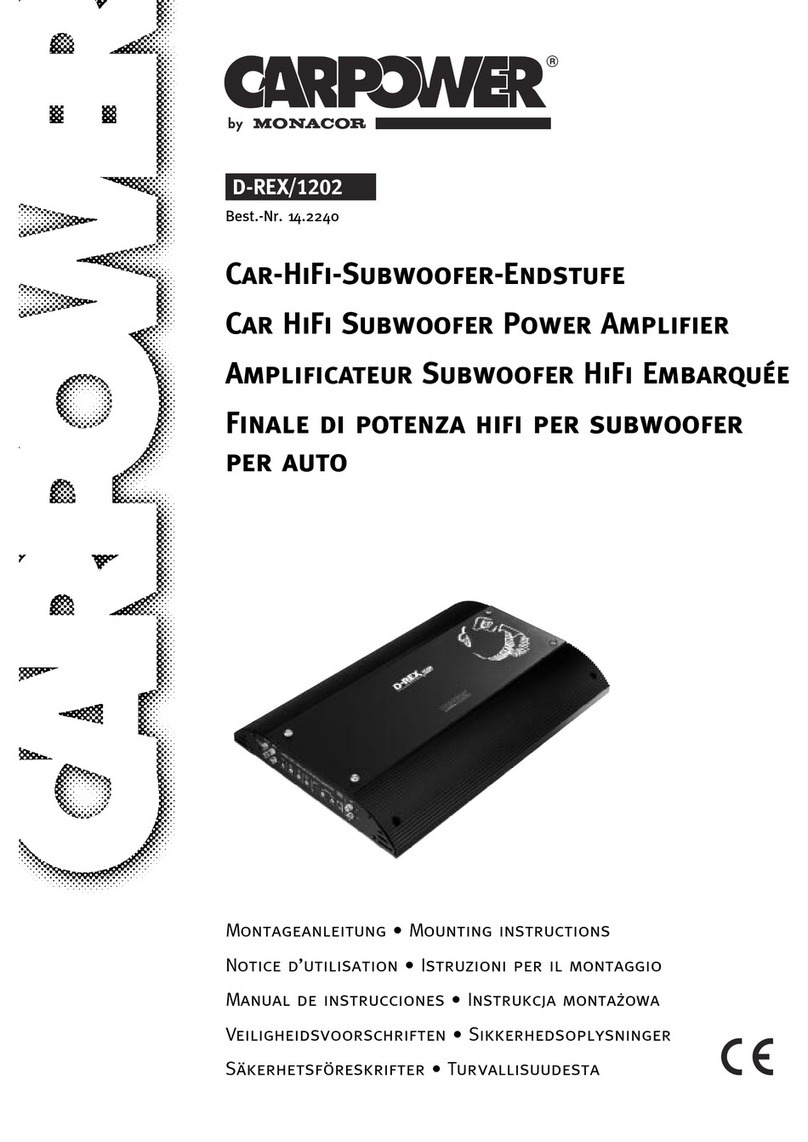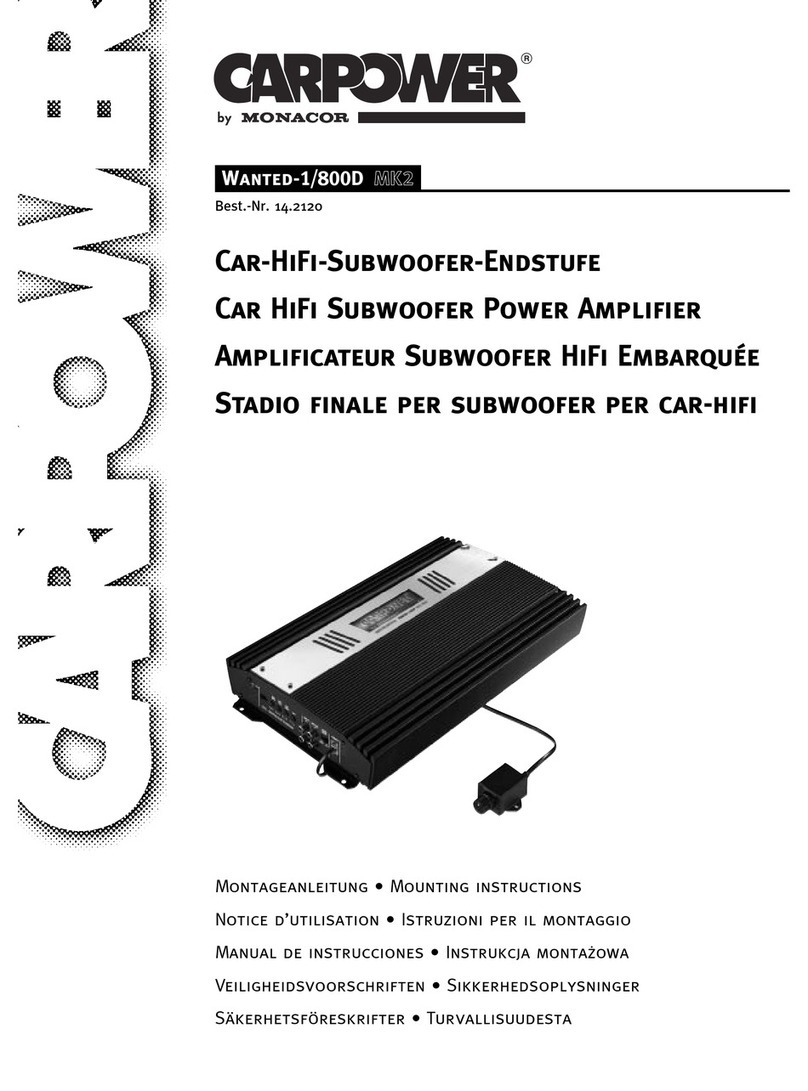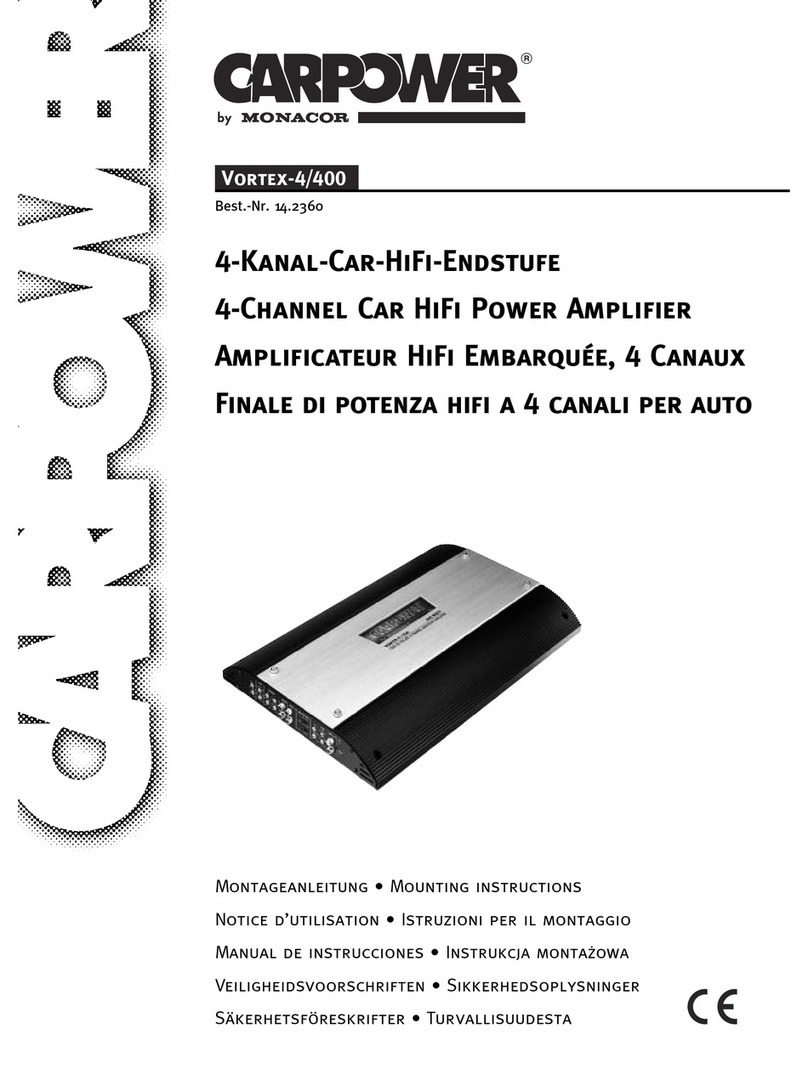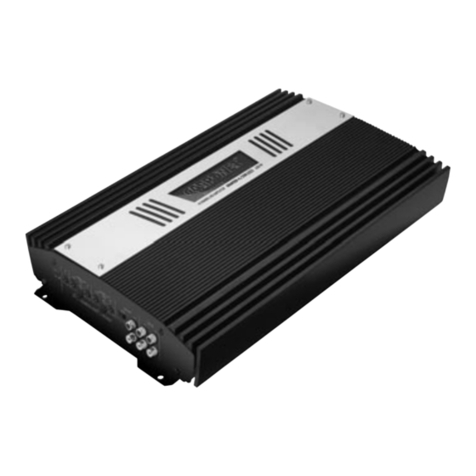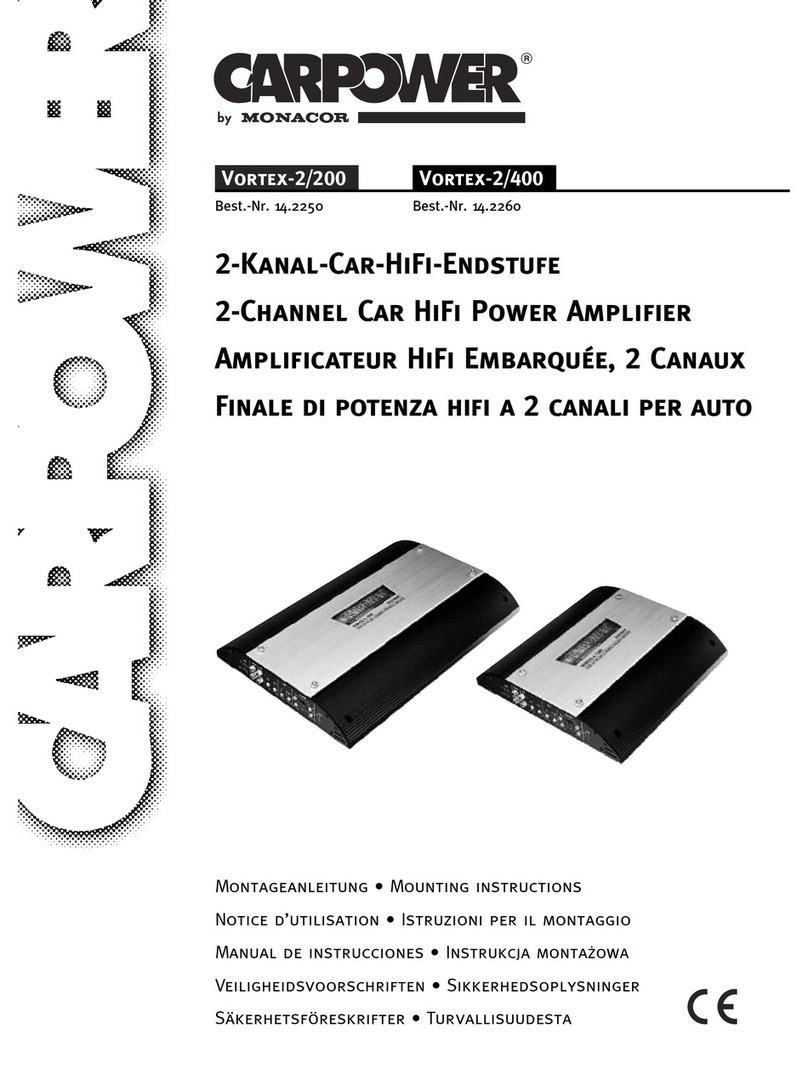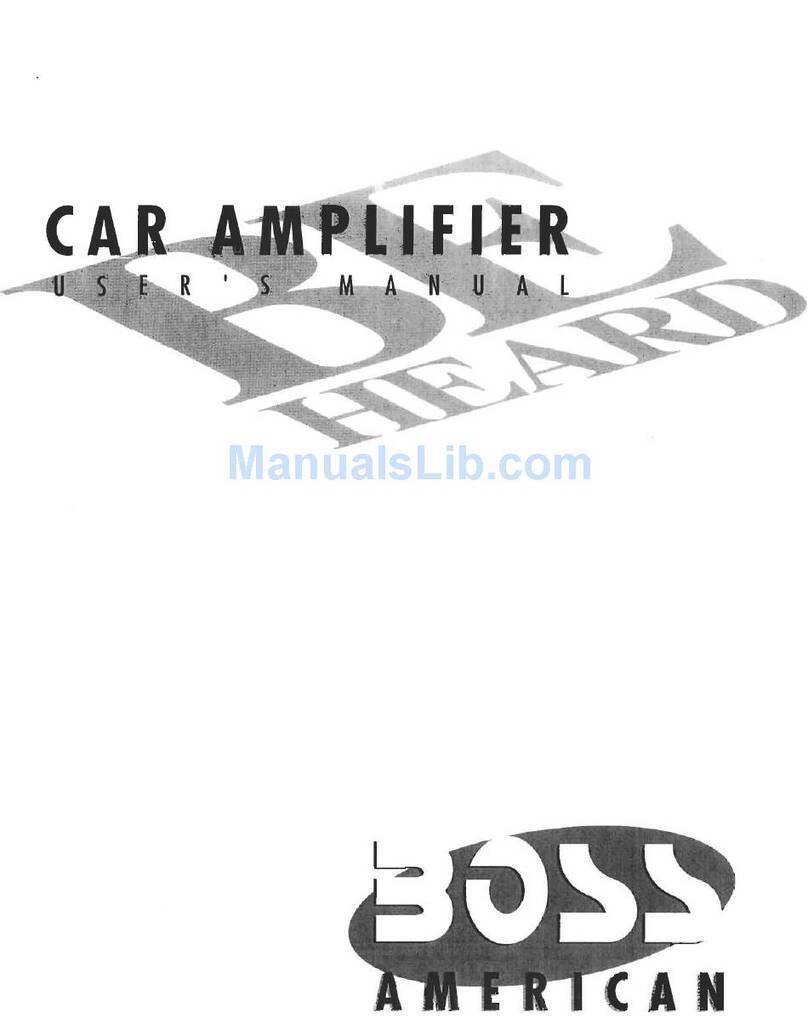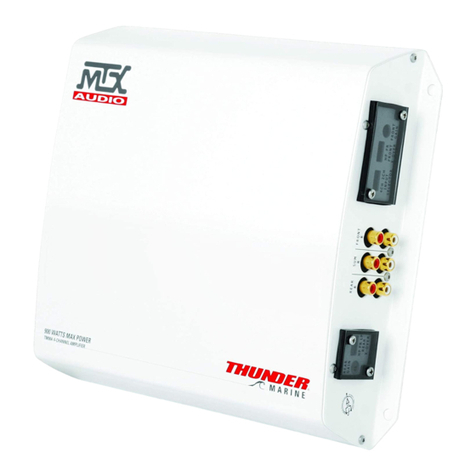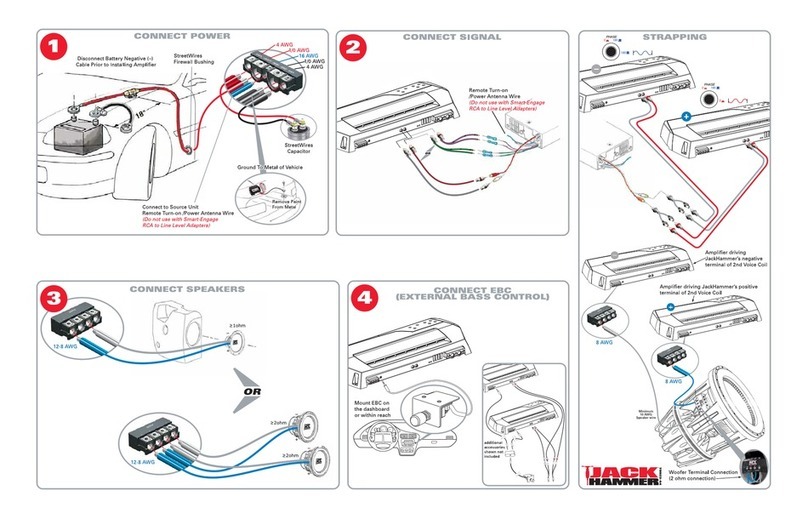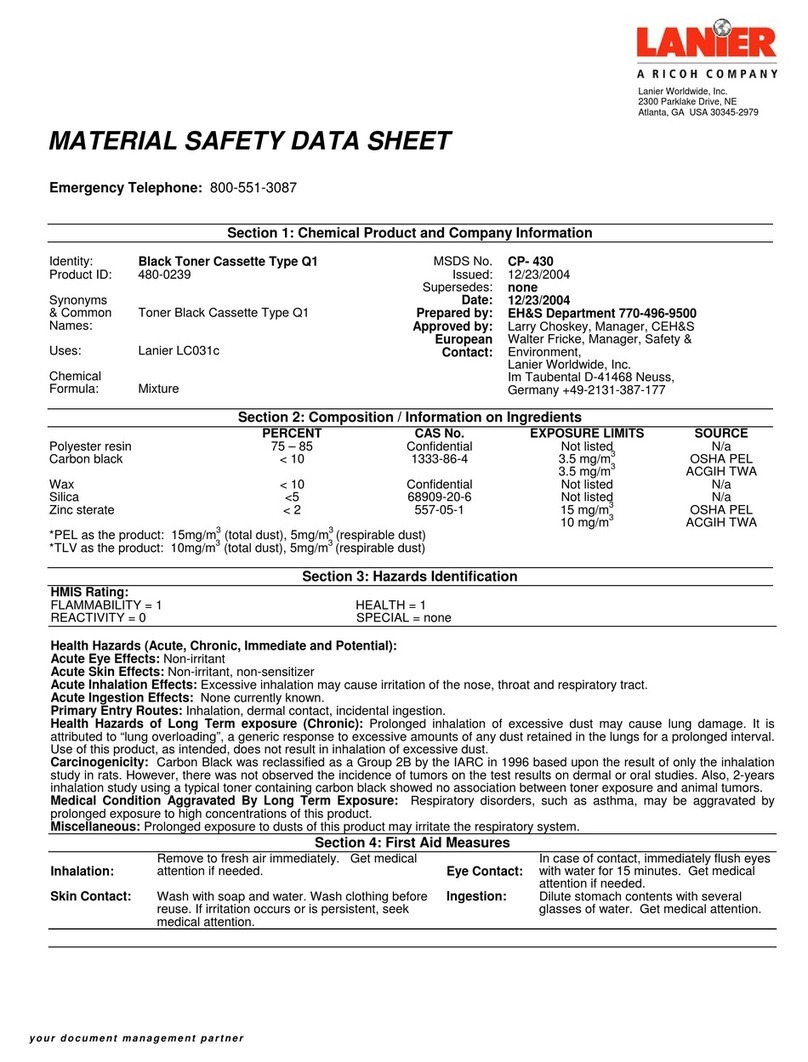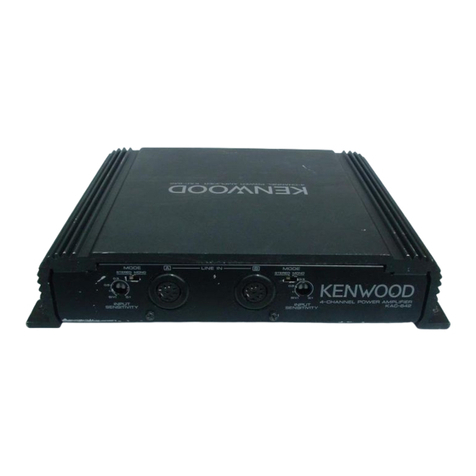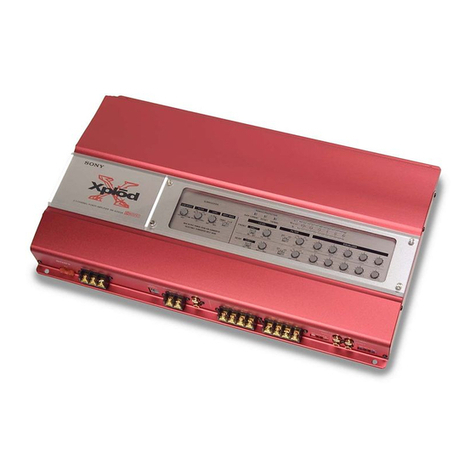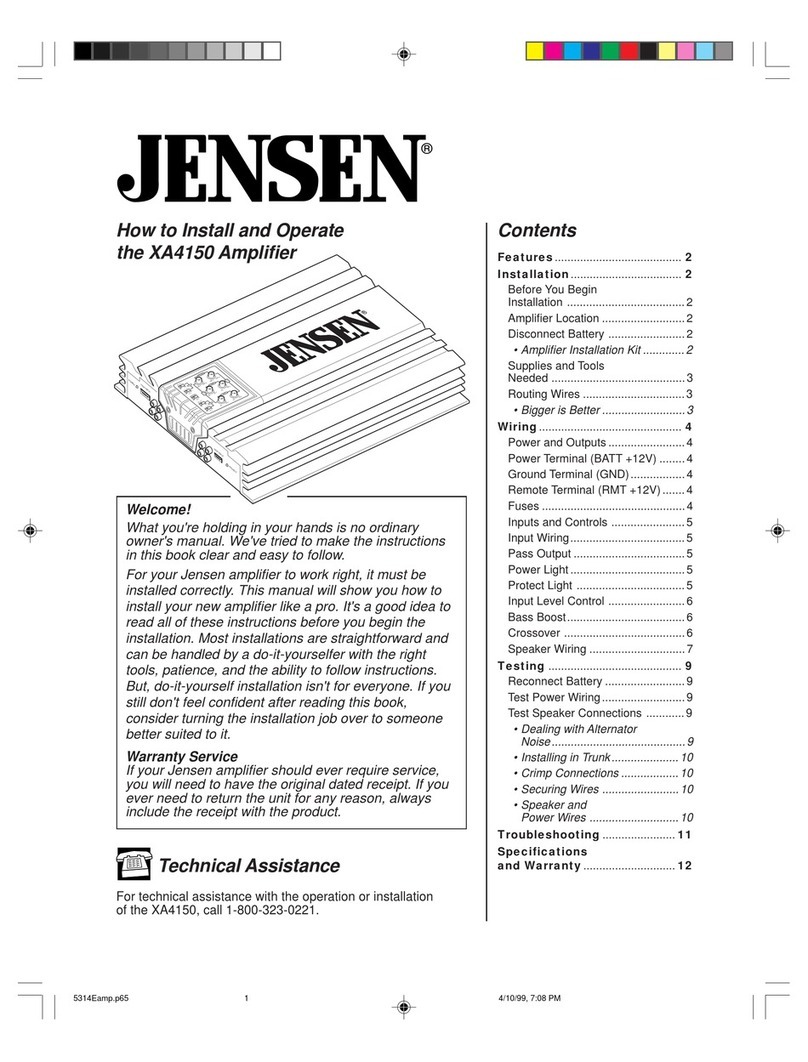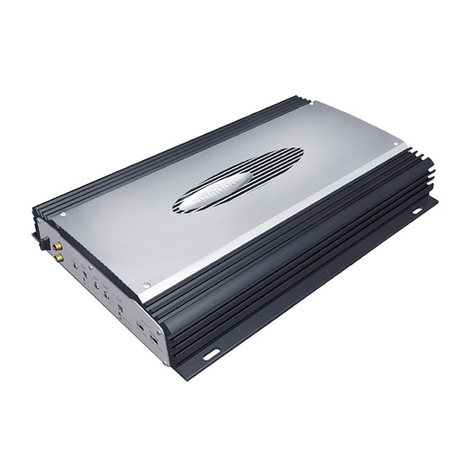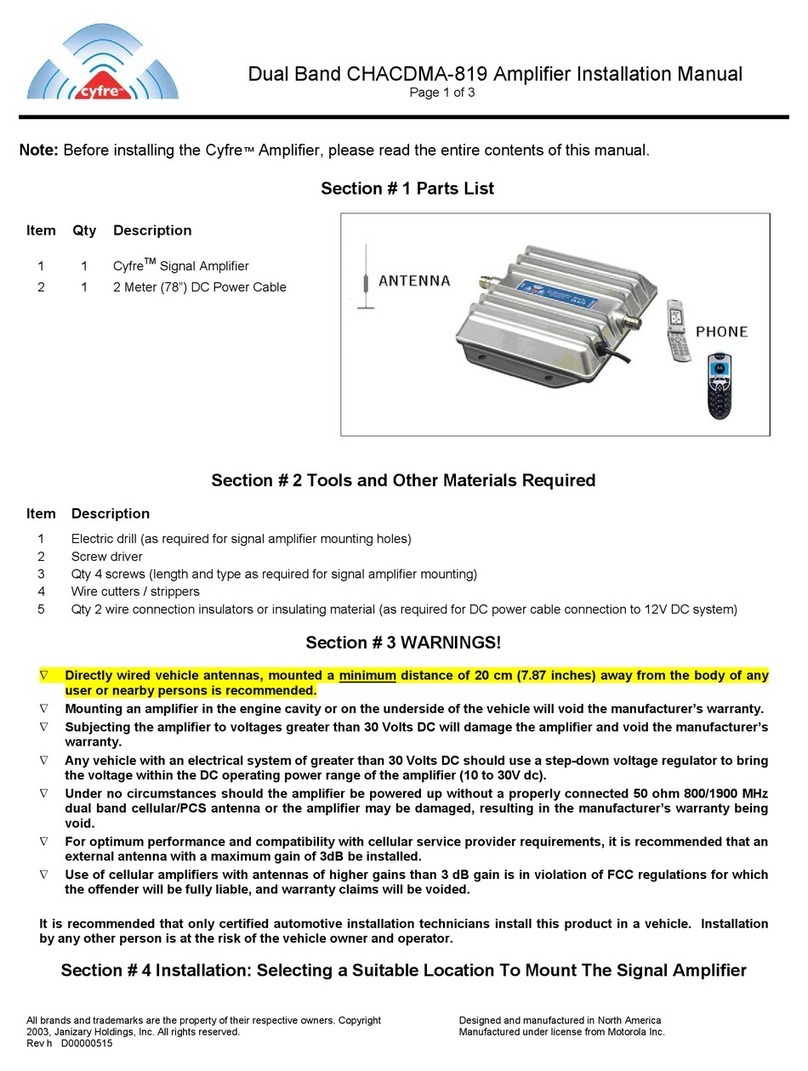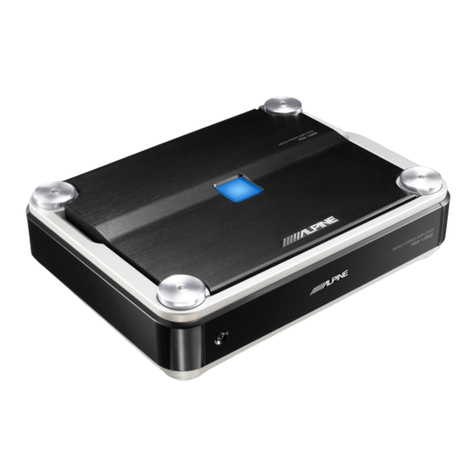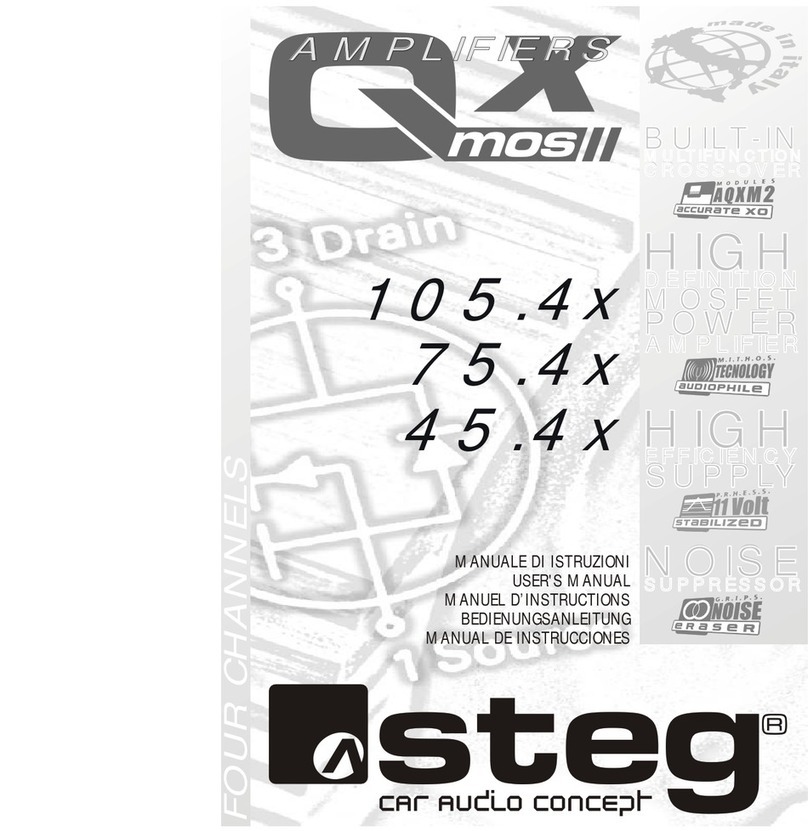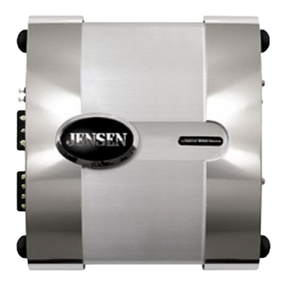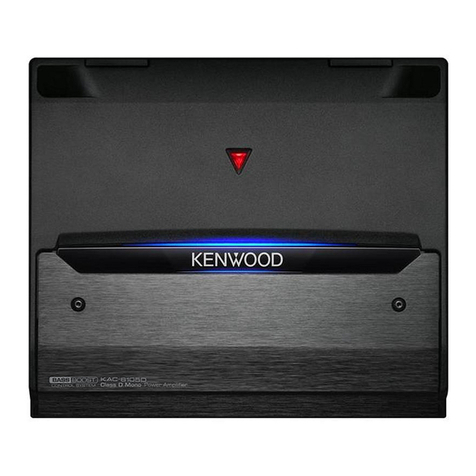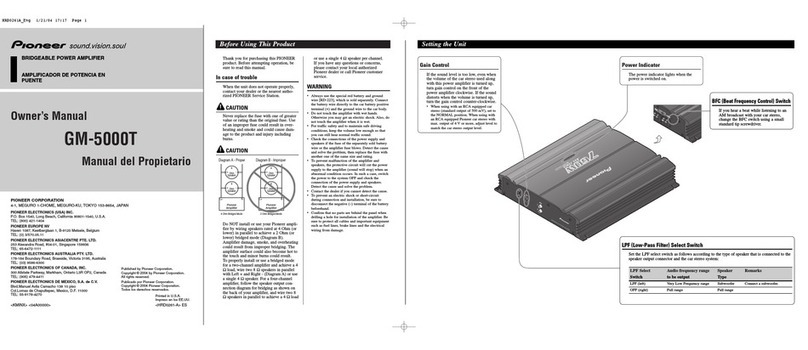2
Vor der Montage ...
Wir wünschen Ihnen viel Spaß mit dem neuen
Gerät von CARPOWER. Bitte lesen Sie diese
Montageanleitung vor dem Betrieb gründlich
durch. Die Anleitung soll Ihnen eine schnelle und
einfache Montage ermöglichen. Hier finden Sie
dazu alle nötigen Informationen. Durch die Be-
achtung der Anleitung werden außerdem eventu-
elle Schäden am Gerät durch unsachgemäße
Montage vermieden. Heben Sie die Anleitung für
ein späteres Nachlesen auf.
Der deutsche Text beginnt auf der Seite 4.
Prior to Mounting ...
We wish you much pleasure with the new unit by
CARPOWER. Please read these operating
instructions carefully prior to operating the unit.
With these operating instructions a quick and
easy mounting will be possible. You will find all
necessary information here. By following these
instructions possible damage to the unit due to
improper mounting will be prevented. Please
keep the operating instructions for later use.
The English text starts on page 7.
Avant toute installation ...
Nous vous souhaitons beaucoup de plaisir à utili-
ser cet appareil CARPOWER. Lisez ce mode
dʼemploi entièrement avant toute utilisation. Cette
notice a pour objectif de faciliter le montage. Vous
y trouverez toutes les informations nécessaires.
En outre, en respectant les conseils donnés, vous
éviterez tout mauvais montage et donc dʼendom-
mager lʼappareil. Conservez la notice pour pou-
voir vous y reporter ultérieurement.
La version française se trouve page 10.
Prima del montaggio ...
Vi auguriamo buon divertimento con il vostro
nuovo apparecchio CARPOWER. Leggete atten-
tamente le istruzioni prima di mettere in funzione
lʼapparecchio. Le istruzioni che contengono tutte
le informazioni necessarie Vi permettono un mon-
taggio rapido e semplice. Rispettando quanto
spiegato nelle istruzioni evitate eventuali danni
allʼapparecchio in seguito ad un montaggio non a
regola dʼarte. Conservate le istruzioni per poterle
consultare anche in futuro.
Il testo italiano inizia a pagina 13.
D
A
CH
GB
Förskrift
Vi önskar dig mycket nöje med din nya enhet från
CARPOWER. Läs gärna säkerhetsinstruktio-
nerna innan du använder enheten. Genom att
följa säkerhetsinstruktionerna kan många pro-
blem undvikas, vilket annars kan skada enheten.
Spara instruktionerna för framtida användning.
Du finner säkerhetsinstruktionerna på sidan 24.
Ennen virran kytkemistä …
Toivomme, että uusi CARPOWER laitteesi tuo
sinulle paljon iloa ja hyötyä. Ole hyvä ja lue käyt-
töohjeet ennen laitteen käyttöönottoa. Luettuasi
käyttöohjeet voit käyttää laitetta turvallisesti ja
vältyt laitteen väärinkäytöltä. Ole hyvä ja säilytä
käyttöohjeet myöhempää tarvetta varten.
Turvallisuusohjeet löytyvät sivulta 25.
F
B
CH
I
SFIN
Antes del montaje …
Tenemos de agradercerle el haber acquirido un
equipo CARPOWER y le deseamos un agrada-
ble a montar este equipo fácilmente. Por favor,
lea esta manual de instrucciones atentamente
antes de hacer funcionar el aparato. Todos los
informaciones necesarios están incluidos. Para
observar las instrucciones daños por un montaje
inadecuado están evitados. Por favor, guarde las
instrucciones para una futura utilización.
El texto en español empieza en la página 16.
Voordat u inschakelt ...
Wij wensen u veel plezier met uw nieuw toestel
van CARPOWER. Lees de veiligheidsvoorschrif-
ten, alvorens het toestel in gebruik te nemen.
Door de veiligheidsvoorschriften op te volgen zal
een slechte werking vermeden worden, en zal
een eventueel letsel aan uzelf en schade aan uw
toestel tengevolge van onzorgvuldig gebruik wor-
den voorkomen.
U vindt de veiligheidsvoorschriften op pagina 22.
Przed uruchomieniem ...
Życzymy Państwu zadowolenia z nowego pro-
duktu CARPOWER. Dzięki tej instrukcji montażu,
będą państwo w stanie poznać wszystkie funkcje
tego urządzenia. Dzięki tej instrukcji obsługi będą
Państwo w stanie poznać wszystkie funkcje urzą-
dzenia. Stosując się do instrukcji unikną państwo
błędów i ewentualnego uszkodzenia urządzenia
na skutek nieprawidłowego użytkowania. Pro-
simy zachować instrukcję.
Tekst polski zaczyna się na stronie 19.
Inden De tænder for apparatet ...
Vi ønsker Dem god fornøjelse med Deres nye
CARPOWER apparat. Læs oplysningerne for en
sikker brug af apparatet før ibrugtagning. Følg
sikkerhedsoplysningerne for at undgå forkert bet-
jening og for at beskytte Dem og Deres apparat
mod skade på grund af forkert brug. Gem venligst
denne betjeningsvejledning til senere brug.
Du finder sikkerhedsanvisningen på side 23.
E
NL
B
PL
DK
wwwwww..ccaarrppoowweerr..ccoomm
